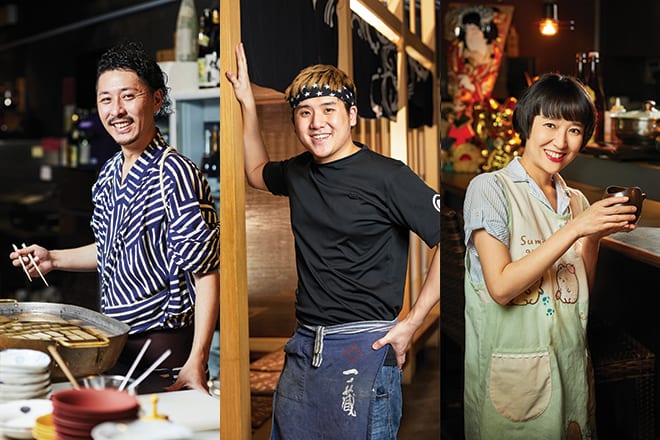This autumn hit is so steeped in Japanese culture it’s even an emoji! We find out what makes traditional oden the love of a nation, and its many modern interpretations.
The next time you’re texting someone, scroll through the emojis on your smartphone. You’ll be able to spot this food item thanks to its distinctive shape: a skewer with a triangle, circle, and rectangle. Each one of these shapes symbolises the basic ingredients found in oden, a well-loved dish by the people of Japan.
While we can pinpoint when emojis began, the exact origins of oden are meanwhile shrouded in mystery. Some claim that the dish is a refined version of dengaku from the Muromachi Period (1338 – 1573). Back then, its earlier counterpart comprised of tofu and triangular konnyaku—a jelly-textured snack made from yam—served on a skewer, and topped with miso paste.
Today, the dish contains numerous ingredients, from circular satsuma-age (fried fish cake) to mochikin (mochi balls wrapped in a silky purse of beancurd skin). It is served in a bowl of dashi stock, and eaten with condiments like mustard and yuzu kosho, a tangy paste made from green peppers and yuzu peel.
Japanese children and adults consume oden during colder seasons like autumnand winter for its nourishing warmth and earthy flavours. Apart from it’s varied palate of textures and flavours, it’s popular precisely because you can choose your favourite ingredients as you please!
In our hunt for the best oden spots within Singapore’s city centre, we discover three chefs who share more about the various ingredients used in this traditional dish, and the various ways to appreciate it. Ranging from the traditional to innovative (does chilled oden tickle your fancy?), oden marks the spot for a filling meal loved by all.
